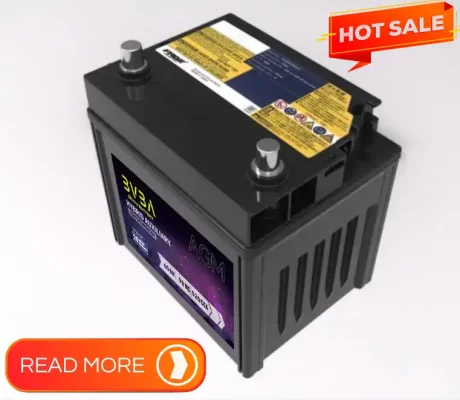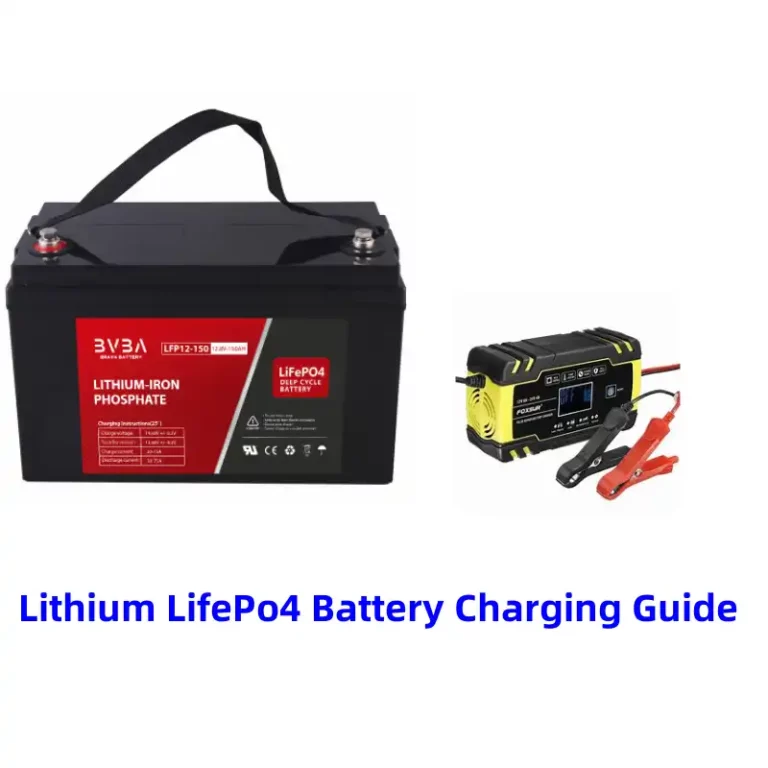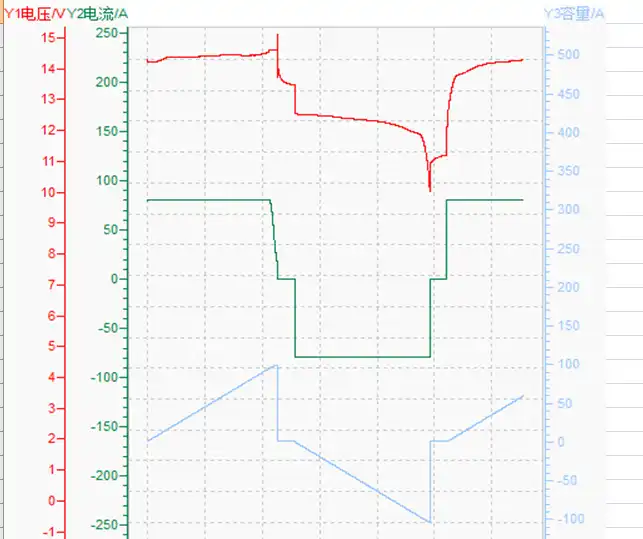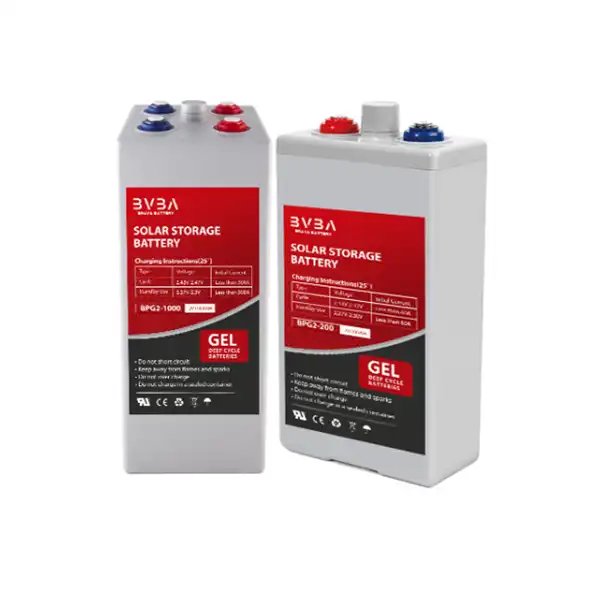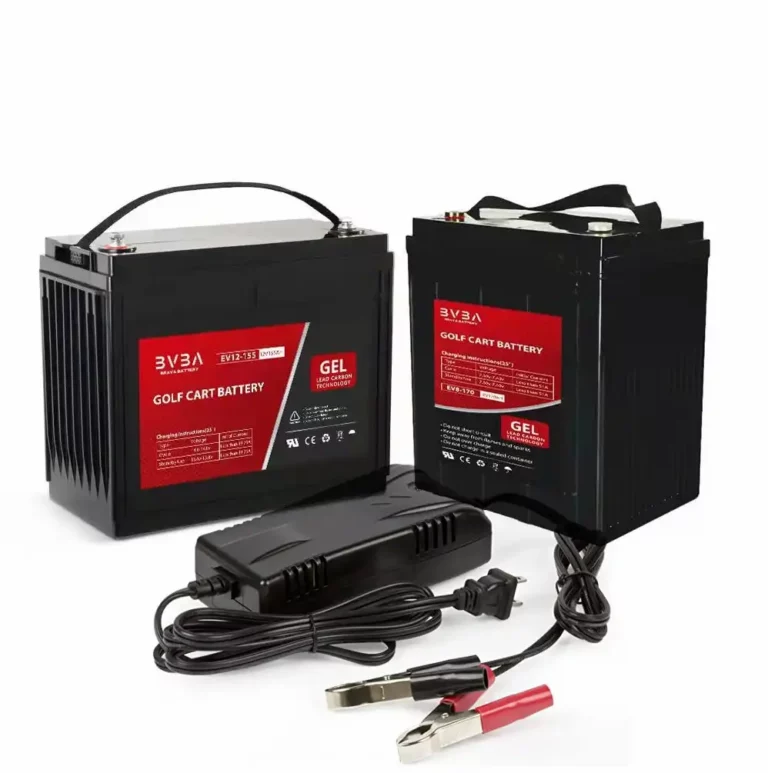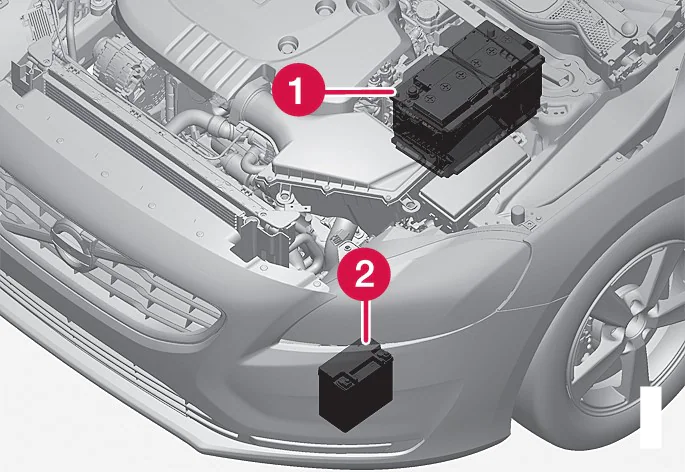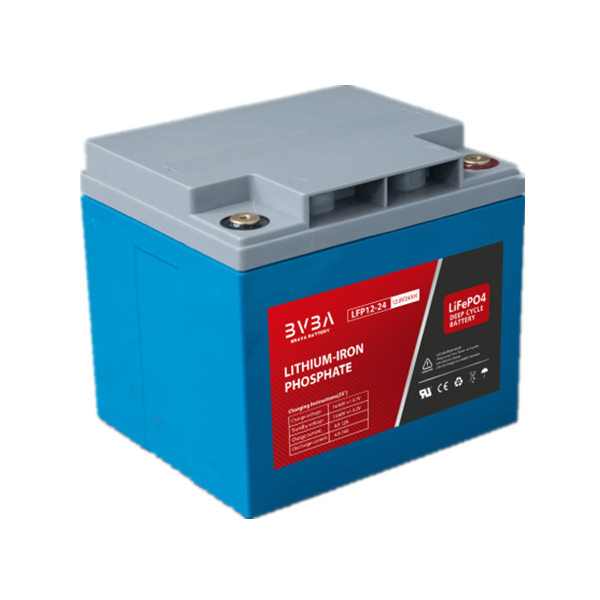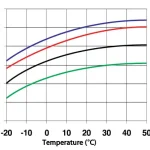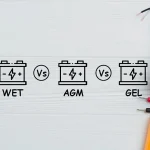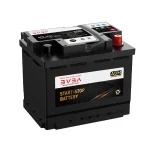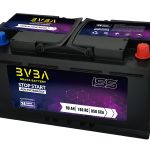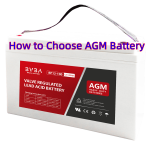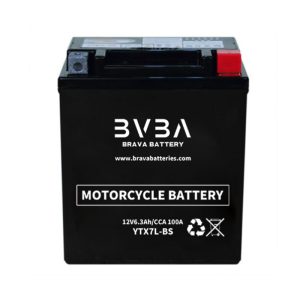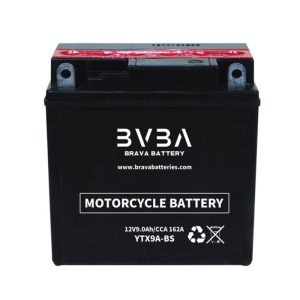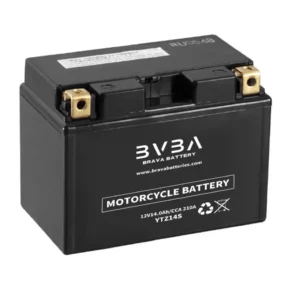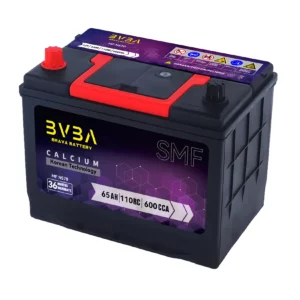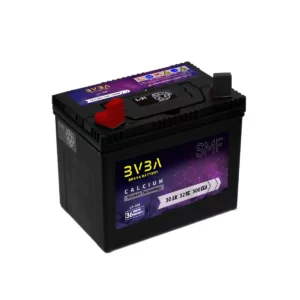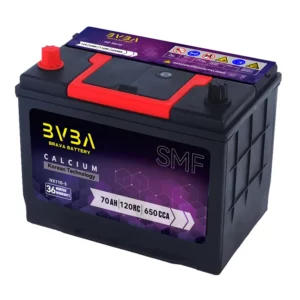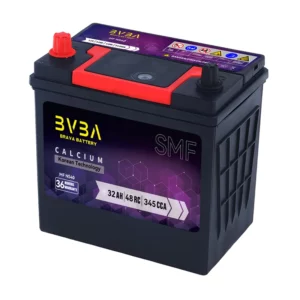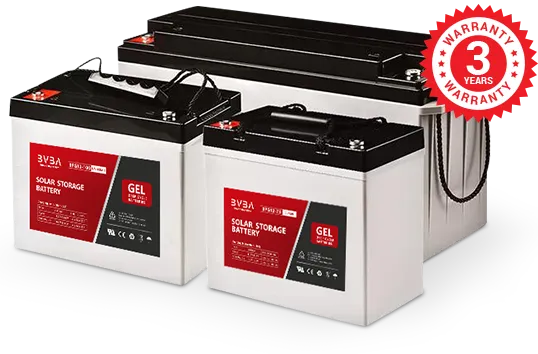AGM battery technology was first developed in the 1970s; the AGM stands for Absorbed Glass Mat, which refers to the way the batteries are constructed. Instead of simply flooding the battery or using gel to stabilize the acids in the cells, the electrolytes in AGM batteries are absorbed and immobilized by fiberglass mats between the plates. This means reactions between acids and the plates can happen more quickly, which allows for higher currents during charging and discharging.
What is an AGM Battery
AGM means absorbent glass mat and refers to the fine glass fiber separator between the positive and negative plates that helps absorb all the battery acid. AGM Batteries are advanced lead-acid batteries.
We’ve already given the most straightforward answer to the question, but there is more to a complete response when asked, “what is an AGM Battery.” AGM or Absorbent Glass Mat batteries are advanced maintenance-free lead-acid batteries designed to resist spilling acid and reduce water loss during usage. In addition, AGMs provide superior power, as well as vibration resistance in today’s high-electrical demand vehicles due to their optimized cell design and compression.
In this quick guide, we will cover some of the basics about AGM batteries, including what sets them apart from conventional style batteries and some of the advantages and disadvantages of choosing an AGM battery for your vehicle.
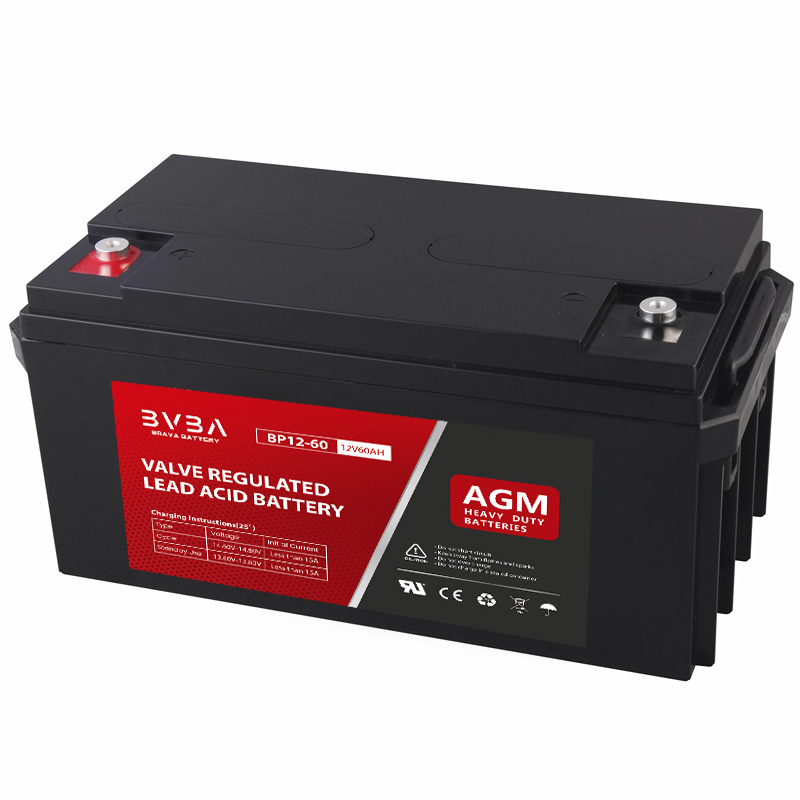
What is the Difference Between Conventional and AGM Batteries?
Conventional batteries may be referred to as “flooded” because they contain electrolyte that moves freely inside the battery encasement. This design used to be the standard style of lead-acid batteries but has since lost popularity in favor of sealed AGM batteries.
While conventional batteries are still the most cost-effective lead-acid batteries, they often have a shorter lifespan and require regular maintenance.
What are the Advantages of AGM Batteries?
AGM batteries hold their charge well and are less likely to sulfate when compared to regular wet cell batteries (conventional batteries types). Because of this, they are an excellent choice for vehicles that require off-season storage.
AGM batteries can be mounted in more flexible orientations than conventional batteries because the liquid is sealed inside the battery. Because the liquid electrolyte flows freely inside conventional batteries, they must be mounted and stored upright to prevent leakage.
Another advantage of the electrolyte being absorbed and held by a separator suspended inside the battery is that it is more resistant to vibration, a vital plus for ATVs or other vehicles that operate on uneven surfaces.
So, if you need a battery for your ATV, snowmobile, or other Powersports vehicle that you ride seasonally, an AGM battery is likely the best option.
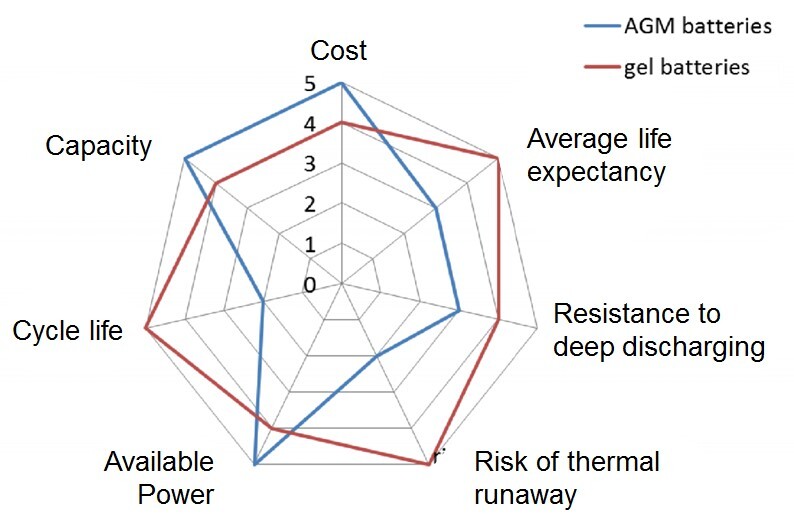
Table 1 spells out the advantages and limitations of AGM.
| Advantages |
|
| Limitations |
|
Table 1: Advantages and limitations of AGM.
Pros and Cons of AGM Batteries?
The AGM technology and their solid structure make AGM batteries stand out from their counterparts – the gel battery type as well as the flooded ones. In terms of cost and working performance, they excel easily. But when facing high voltage conditions, AGM batteries’ shortcoming will be exposed.
Pros:
- Spill proof
- Vibration resistant
- Shock resistant
- Withstand colder temperatures in contrast to a typical wet cell battery
- Installed in any orientation.
- Produce minimal gassing
- Low self-discharge rate
- Last longer than SLA batteries.
- Require no maintenance
Cons:
- Higher selling price due to complicated manufacturing process
- Cannot handle overcharging and high voltages
- Requires to be topped off before use every time
- Requires a charger specifically designed for AGM batteries
- Testing results from older version of battery testers will not be accurate.
How Do AGM Batteries Work?
This part involves a little bit of technical knowledge, but it does help understand how Absorbent Glass Mat (AGM) technology influences the performance of a battery.
The AGM battery technology features a high discharge rate and a wide operation temperature range. The AGM battery meaning reliable, long-lasting, and highly efficient; due to the encased structure and the absorbent glass mat that contains the electrolyte.
The absorbent glass mat is also called AGM separator. Being ultra-thin, it is sandwiched between positive and negative lead plates, and saturated in the electrolyte. Besides, its most important function is soaking up the electrolyte and keeping the fluid in a motionless form. As a result, it maximizes the reaction surface between the electrolyte and the battery plates, which greatly enhances the charging and discharging efficiency. The encased structure also rends AGM batteries uniqueness in maintenance and transportation.
When is a Conventional Battery Best?
There aren’t many disadvantages to choosing an AGM battery. However, whether you’re hoping to replace your existing battery or purchase a new battery for the first time, it’s essential to understand the difference between AGM and conventional batteries.
Conventional batteries, as mentioned above, are still more cost-efficient for a daily driver than AGM batteries. If you use your vehicle every day and are looking for a cost-effective option, a conventional battery may be correct for you. However, conventional batteries offer an increased chance of battery spills or leaks.
AGM holds a clear advantage in any seasonally used vehicle, including motorcycles in areas where the climate makes them seasonal equipment.
Please also note that a conventional battery cannot simply be replaced with an AGM battery. If your vehicle originally had a conventional battery, the vehicle rectifier or regulator design is for a conventional battery, and it could cause an issue with the replaced AGM battery. The opposite way as well.
What are the Most Common Uses?
AGM Batteries most often go in high-electrical demand vehicles and seasonally used vehicles like ATVs, Snow Mobiles, UTVs, and Powersports vehicles that require higher power, acid spillage resistance, and vibration resistance. If you need lots of power, the ability to store your vehicle during the off-season, and are looking for a virtually maintenance-free battery, then an AGM is a perfect choice.
How Long Does an AGM Battery Last?
For start-stop applications, AGM batteries can generally last six to eight years.
The durability for storage purposes depends on the operating temperature and the depth of discharge (DoD) – which refers to the available capacity of batteries when they are fully topped off. Another thing to consider that can affect the lifetime would be the battery performance, which can deteriorate over time.
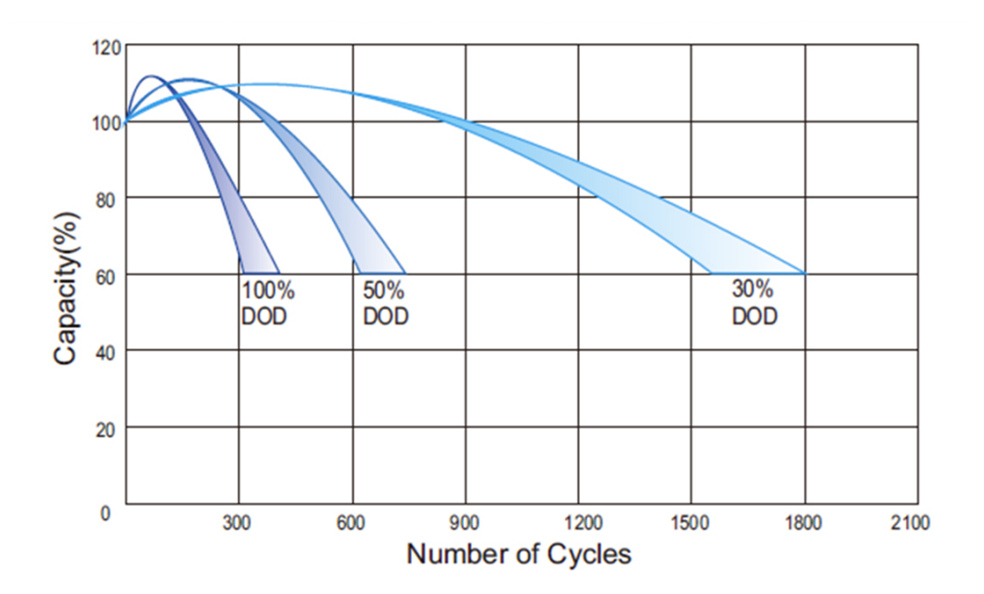
Common AGM Battery Applications
Start-stop applications. With the ability to produce short intense burst of energy, AGM batteries are perfect for use of activating the engine in vehicles like cars, trucks or RVs.
Deep-cycled applications. As deep-cycled batteries, AGM batteries can deliver a small amount of current stably and moderately to the appliances in any boat, truck, or car; allowing them to operate and run in any condition.
Solar energy storage applications. AGM batteries also offer a good choice for household solar energy storage. They can be connected in series for higher storage capacity.
AGM battery vs lithium & AGM battery vs standard battery
People who are not familiar with battery types might get confused about the differences between them, and they might encounter questions like:
- What’s the Difference Between AGM and Regular Battery?
- Are AGM Batteries the Same as Valve Regulated Lead Acid Batteries?
- Are Flooded and Sealed Lead Acid Batteries the same?
- How is a Lithium Battery different from an AGM battery?
Before discovering the answers, we must understand that there are mainly four kinds of batteries on the market. Each of them was named after their unique battery technology.
- Flooded: the battery uses lead plates suspended in the electrolyte and large separators. The liquid flows freely inside the casing.
- AGM: a battery type using a fiberglass mat between the positive and negative lead plates to absorb and hold the battery’s acid – the liquid is hold still.
- Gel: a battery type keeping the electrolyte suspended in gel form, so the battery is spill-proof.
- Lithium Iron Phosphate: a type of battery that uses lithium iron phosphate
Technically, the four types of solar batteries can also be divided into two categories, the lead-acid and the lithium-iron phosphate. Among them, flooded lead-acid batteries, AGM batteries and gel batteries belong to lead-acid batteries.
How to Maintenance AGM Batteries
- Check voltage every 3 months (or more frequently if stored at higher temperatures as high temperatures cause higher self-discharge rates)
- Periodically:
- Keep top of battery clean
- Check cables, clamps, and case for obvious damage or loose connections
- Clean terminals and connectors as necessary
- Recharge battery if voltage is below 12.4V.
- Once activated, the battery is permanently sealed and must never be opened. There is no need to add water to AGM batteries. Adding water to AGM batteries will result in irreparable damage to the battery or the vehicle.
How to Storage AGM Batteries
If the powersports vehicle is in storage or used infrequently, disconnect the battery cable to eliminate drain from electrical equipment. Check the battery every month (for Conventional types) and every three months for AGM batteries.
- For long storage or infrequent use, disconnect the battery cables from the vehicle to eliminate battery drain from electrical equipment.
- Fully charge battery before storage using a Yuasa approved charger.
- If possible, remove battery from vehicle
- Clean the battery and terminals with a solution of baking soda and water to neutralize any electrolyte that may be on the outside of the battery.
- Be careful that nothing enters the battery during cleaning.
- The same solution can be used to clean the battery compartment to neutralize any electrolyte that may be present.
- Rinse with clean water and dry thoroughly.
- After the battery is cleaned, inspect carefully for any signs of damage or extraordinary wear that may have occurred during use. If you have any concerns, you should seek the advice of a mechanic or a battery specialist.
- Even with proper maintenance, batteries will not last forever and will need to eventually be replaced.
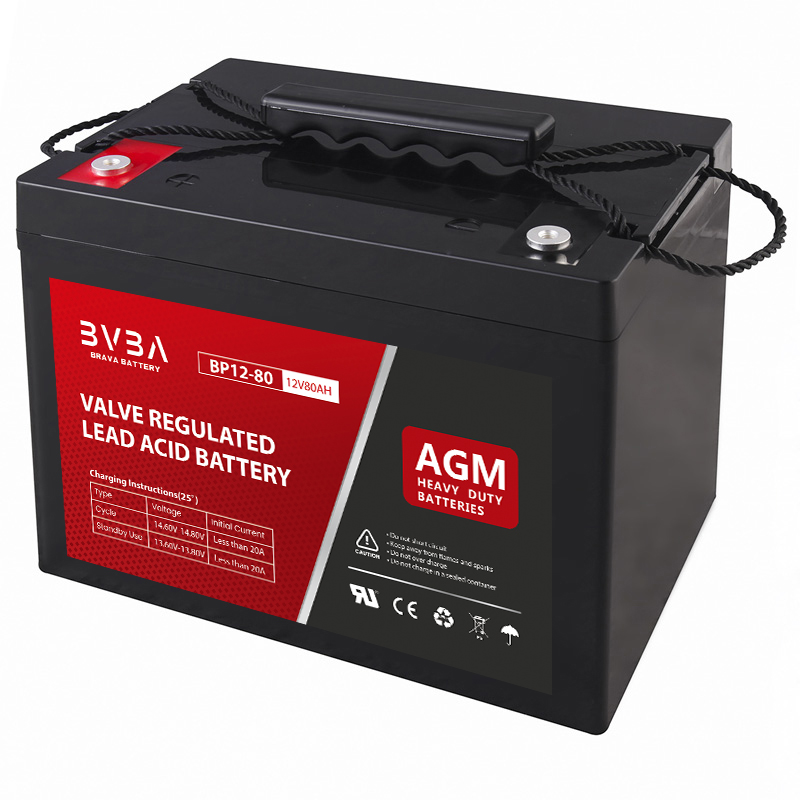
How to Extend the Life of Your Motorcycle Battery
Keep it Charged
The absolute best thing you can do to keep your motorcycle battery working stronger for longer is to make sure it stays charged. If you ride your motorcycle daily, the alternator should take care of charging the battery while you ride, but if you keep your bike in storage for weeks or months at a time, you’ll need to invest in a motorcycle battery charger.
Stick to a Maintenance Schedule
As with most components of your motorcycle, the battery needs maintenance too. Some routine maintenance you can easily implement includes:
- Check terminals for signs of corrosion and clean off any deterioration with a wire brush.
- For conventional batteries, check the electrolyte levels and add distilled water if the plates are not submerged.
- Test your battery’s power with a battery tester to make sure it’s functioning properly.
All of these simple checks and adjustments should be done on a monthly basis and can go a long way toward extending the life of your battery.
Regulate the Temperature
Vapor loss is a normal occurrence for conventional motorcycle batteries that happens gradually over time. However, extreme shifts in temperature can expedite vapor loss, which will eventually cause the battery to stop holding its charge. Even though there’s no way to protect your motorcycle from all temperature fluctuations, storing it in a climate-controlled garage will keep your battery at a stable temperature while not in use.
For YTX, series batteries, vapor loss is not an issue because they are sealed and the gases recombine inside the battery so that no fluid is lost from the battery. However, storing them in a climate-controlled garage will reduce self-discharge and keep the batteries at a stable temperature for reliable starting all year long.
Use the Proper Battery for Your Motorcycle
Not all bikes are created equal. The same goes for batteries. By making sure you’re using a battery that is designed to be used with your specific model of motorcycle, the better it’ll perform. We know it can be tough to know which battery is best suited for your bike, which is exactly why we created our battery finder to ensure that you know which to choose.
It’s also important to note that when it comes to motorcycle batteries, brand matters. Yuasa is the most trusted brand of motorcycle battery on the market—and has been for decades. That’s because we’ve taken all the maintenance factors into account and designed our high-performance products to combat all the usual causes of wear.
The engineering behind our products has led to improved low-temperature performance and many of our products do not require the typical maintenance you’d need with other battery brands. For instance, most of our products are designed to be airtight and spill-proof—which means they don’t require water to be added. Additionally, the corrosion-resistant nature of our products combats against rust and deterioration. All of these considerations make it one of the most maintenance-free batteries available.
Scooter Batteries Related Products:
Related Products Application:
Stop-Start Battery Related Posts:

